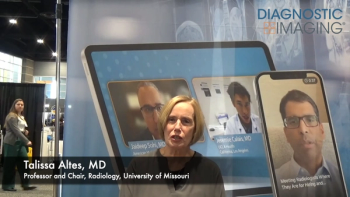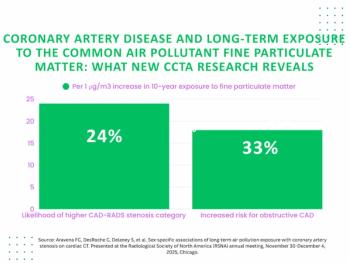
High-Performance, Low-Field MRI Provides Diagnostic Quality in Heart Attack Patients
Performance of 0.55T MRI is comparable to 1.5T MRI in acquiring and interpreting late gadolinium enhancement in patients suspected of myocardial infarction, research shows.
A lower-field strength MRI can provide effective cardiac imaging for patients who have suspected or known myocardial infarction, a new pilot study has demonstrated.
In a poster presentation submitted to the International Society of Magnetic Resonance in Medicine virtual annual meeting, a team of cardiology investigators from the National Institutes of Health (NIH) described their use of 0.55T MRI to acquire and interpret late gadolinium enhancement (LGE) in possible heart attack patients.
Because high-field strength MRI has been known to increase artifact in cardiac imaging, there is a push to develop low-field cardiac MRI, the team said.
“Our group has demonstrated that a lower field strength, paired with the high-performance hardware and contemporary imaging software, may be well suited to cardiac imaging,” said the team led by W. Patricia Bandettini, M.D., associate research physician at the NIH. “Our pilot investigation demonstrates that demanding imaging techniques, such as late gadolinium enhancement imaging, are feasible at 0.55T.”
Successful implementation of this approach could not only reduce costs, the team said, but it could also increase accessibility to cardiac MR imaging.
To determine the comparative difference between both types of imaging strengths, the team assessed 13 patients for known or suspected myocardial infarction with both 0.55T and 1.5T MRI. The investigators intravenously administered gadobutrol and performed LGE imaging after 10 minutes.
For imaging analysis, LGE sequences selected and optimized for each field strength on a 17-segment model. They used the identification of abnormal LGE consistent with myocardial infarction, as well as additional grading of the coronary distribution – whether the myocardial infarction was less than or more than 50 percent transmural extent – for scoring.
According to their evaluations, the number of segments identified between each field strength was comparable. The 0.55T scanner identified 59 segments with myocardial infarction (50 subendocardial and nine transmural), and the 1.5T scanner detected 63 segments with myocardial infarction (53 subendocardial and 10 transmural). In addition, the team said, epicardial coronary artery distribution matched exactly between the two field strengths.
The team plans to expand their work with future studies that include free-breathing acquisition methods.
Newsletter
Stay at the forefront of radiology with the Diagnostic Imaging newsletter, delivering the latest news, clinical insights, and imaging advancements for today’s radiologists.




























